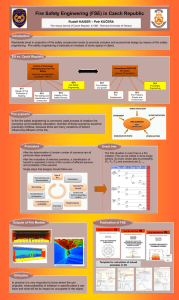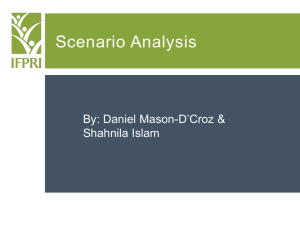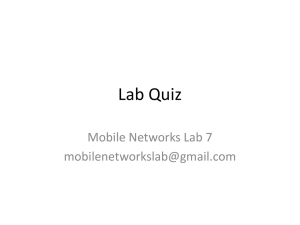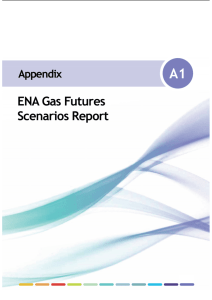Do you have any comment on the quantitative - e
advertisement
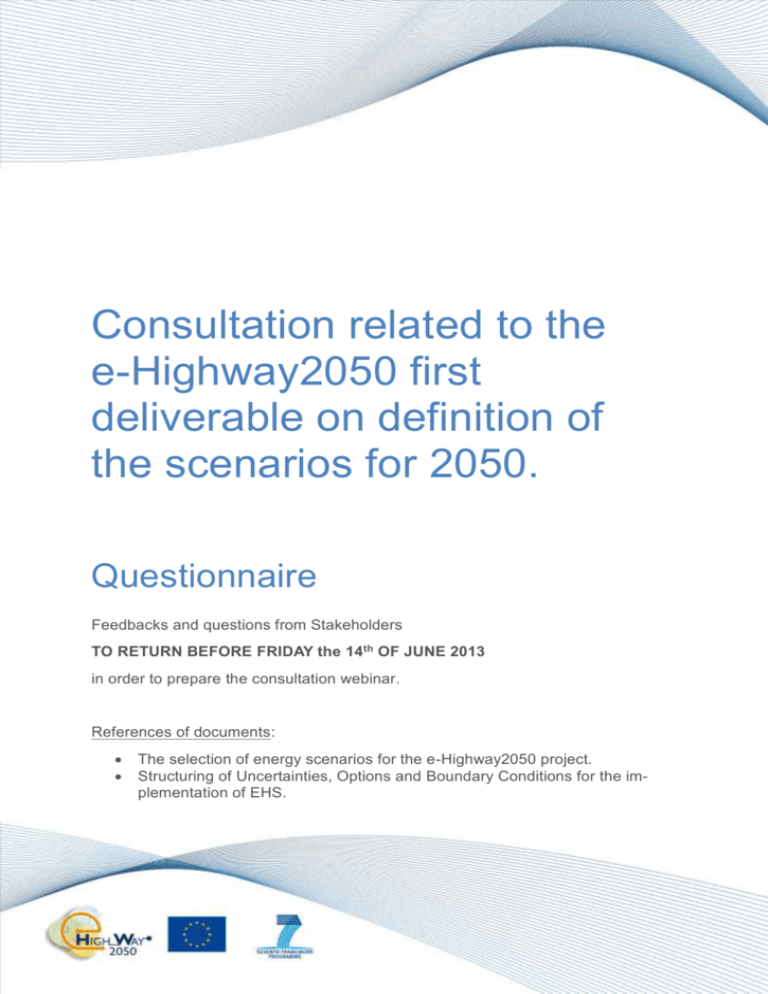
Consultation related to the e-Highway2050 first deliverable on definition of the scenarios for 2050. Questionnaire Feedbacks and questions from Stakeholders TO RETURN BEFORE FRIDAY the 14th OF JUNE 2013 in order to prepare the consultation webinar. References of documents: The selection of energy scenarios for the e-Highway2050 project. Structuring of Uncertainties, Options and Boundary Conditions for the implementation of EHS. Stakeholder information Expert Name Organization Contact Date e-Highway2050. Modular Development Plan of the Pan-European Transmission System 2050. Funded by the European Commission, the e-Highway2050 project aims to put forward a Modular Development Plan at the 2050 time horizon, based on a long-term planning methodology able to assess the coming restructuring and expansion operations of the European power transmission system. e-Highway2050 is a 40-month project which started on September 2012e-Highway2050. It pave the way for an integrated European electricity market as well as a pan-European grid that is able to host large quantities of electricity from renewable energy sources and transport it over long distances. The consortium includes transmission system operators, research institutions, universities, companies and NGOs from throughout Europe. e-Highway2050 examines the framework conditions and, using various scenarios, develops approaches for planning the expansion of the European electricity grid by 2020, 2030, 2040 and 2050 respectively. Stakeholders from all over Europe are invited to discuss assumptions and intermediate results and to assess the final results of the different work packages in different consultations and workshops. The overall objective is to support the planning of the Pan-European Transmission Network, focusing on 2020 to 2050, to ensure the reliable delivery of renewable electricity and pan -European market integration. The project will result in a modular development plan for possible electricity highways, based on various future power system options such as high Renewable Energy Sources (RES) penetration, technology breakthroughs in transmission technologies, innovative active demand-side management etc. It will also develop options for a complete pan-European grid architecture based on different scenarios. Benefits, costs and risks will be considered for each scenario. Moreover, socio-economic and network governance considerations will be highlighted, with an emphasis on environmental and public acceptance issues. Further information at www.e-highway2050.eu 1 Understanding of the methodology for the identification of the scenarios: A detailed bottom-up approach is necessary to ensure transparency and efficient communication of Boundaries to the other WP's. Thus, the definition of Boundary Conditions starts with a bottom -up process where we distinguish between uncontrollable Uncertainties which are important for the development of an Electricity Highways System (EHS) but which the decision m aker(s) cannot control, and controllable Options which can be chosen by the decision maker(s). Any combination of Uncertainties will create the boundaries for a possible Future in which the EHS will be implemented, while the decision maker(s) choice of one or more Options will combine into a possible Strategy on how to implement EHS. Different Scenarios for e-Highway2050 are then established by choosing an appropriate set of Strategies and testing those under different Futures. 1.1 Do you have any comments on the methodology used including the description of Strategies and Futures? 1.2 Among the uncertainties and options, do you have any comments on the main criteria selected for the definition of the scenarios for 2050? 1.3 Are criteria relevant enough? Do you have any other remarks on the methodology of identification? 2 The methodology for the reduction of the number of scenarios: Through the scenario building process, qualitative definitions of 5 possible Futures and 6 Strategies were established by assigning possible ranges to the most relevant Boundary Conditions. Second, the list of 5 x 6 possible Scenarios was reduced through elimination to a final list of 5 relevant e Highway2050 Scenarios. This is a feasible number of scenarios to perform detailed analyses in the following work packages, but may be further reduced during the numerical quantification in WP2. 2.1 Does the filtering process using the Generation/Demand and Exchange point of view is relevant, sufficient and clear enough? 2.2 Do you have any comment on the filtering process, which ends up with the 5 scenarios? 3 The concept of main challenging scenarios: 100% RES Big & Market Large fossil fuel with CCS and nuclear Large scale RES & no emission Small and local The e-Highway2050 scenarios are neither predictions nor forecasts about the future. One scenario will not be more likely to happen than another, one scenario is not preferred or "better" than another. Rather, each e-Highway2050 scenario is one alternative image of how the future of European Electricity Highways (EHS) could unfold. Grid architecture will be developed within the e-Highway2050 project for each energy scenario selected. The purpose is to identify the more challenging scenarios that cover a maximum of cases in a limited number of scenarios to study: 3.1 Does the final presentation (radars diagrams and tables) and description give enough details to have a sufficient understanding on the 5 final selected scenarios? 3.2 Do you have any comment on the selection process of the relevant scenarios, which encompass all different possible scenarios? 3.3 Do you agree on the final selection of the scenarios? 4 The identification of the boundary conditions for the study Boundary Conditions (BC) have been defined as the upper and lower limits of the Uncertainties and the Options. However, since WP1 is only the starting point of the scenario building and following analyses in e-Highway2050, not all boundaries can be specified in numerical values in this report. In particular, the Options are mostly described verbally since these will be the outcome of later analysis of the project. The Boundary Conditions have been assessed and documented in separate tasks in WP1: Technological BC, Economic and financial BC, Political, socio-political and environmental BC and Research, development and deployment BC. Do you have any comment on the quantitative values of the boundary conditions? 5 Do you have any general question to add that you would like to be answered during the consultation webinar? THANK YOU FOR YOUR CONTRIBUTION! Consortium.


